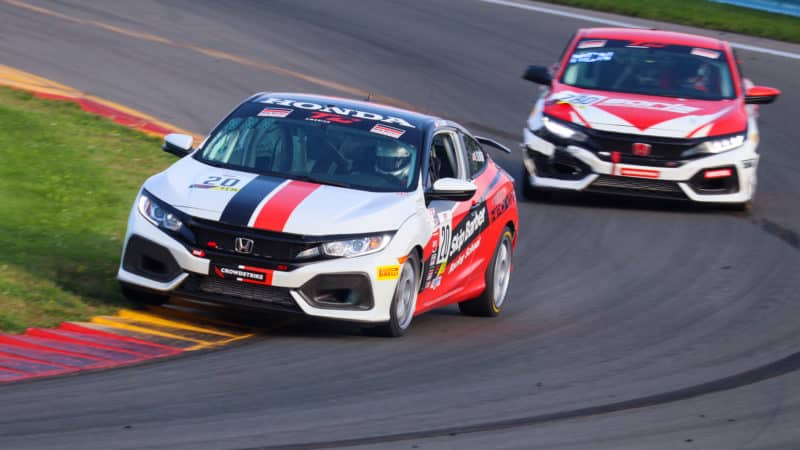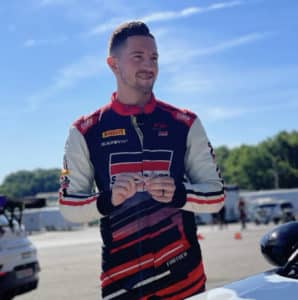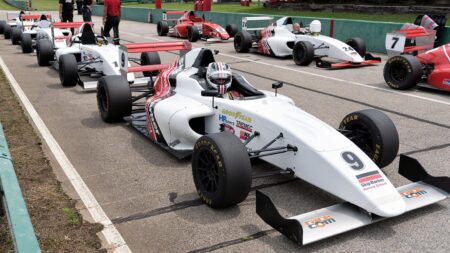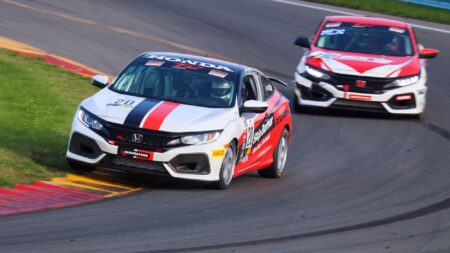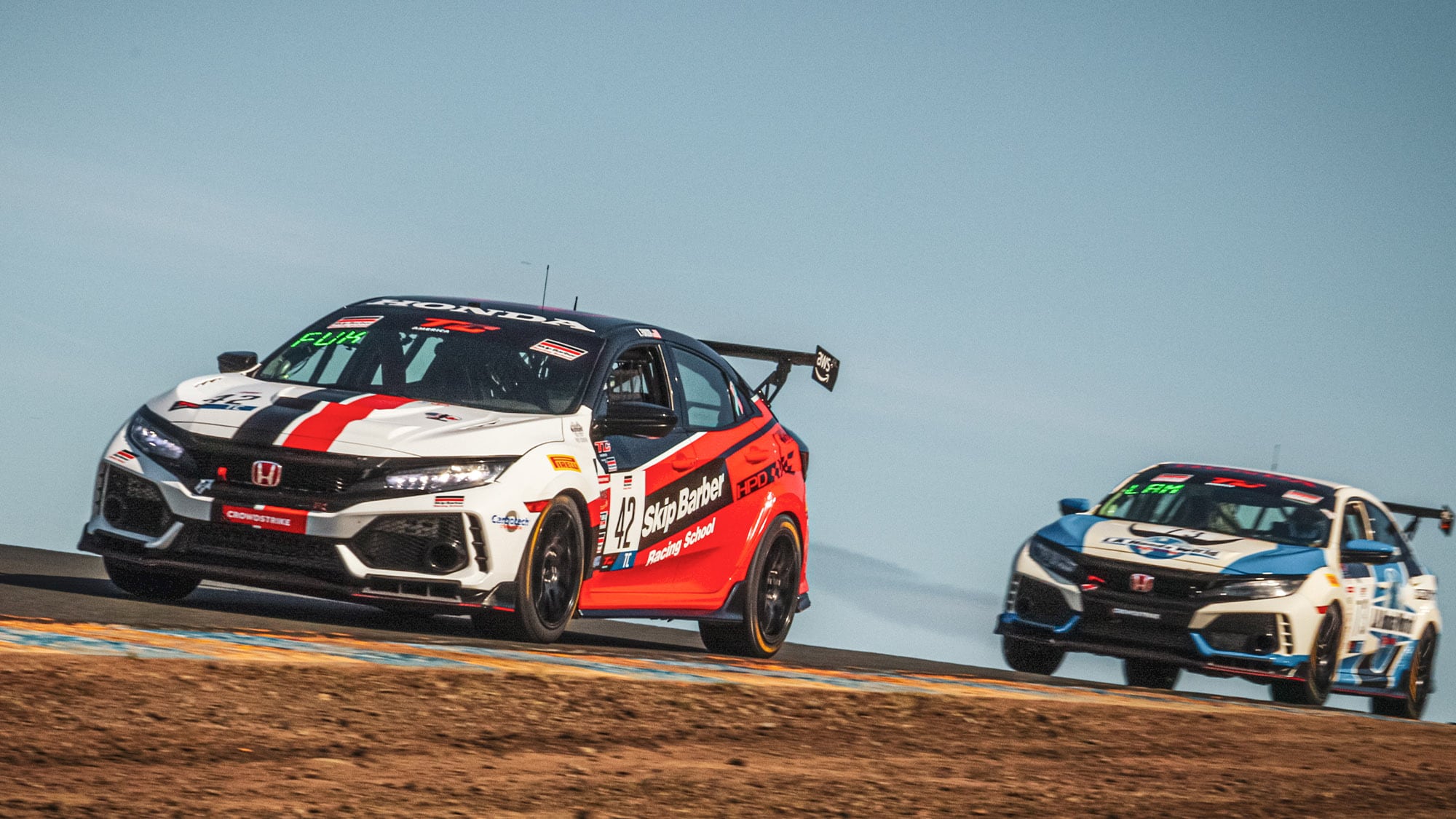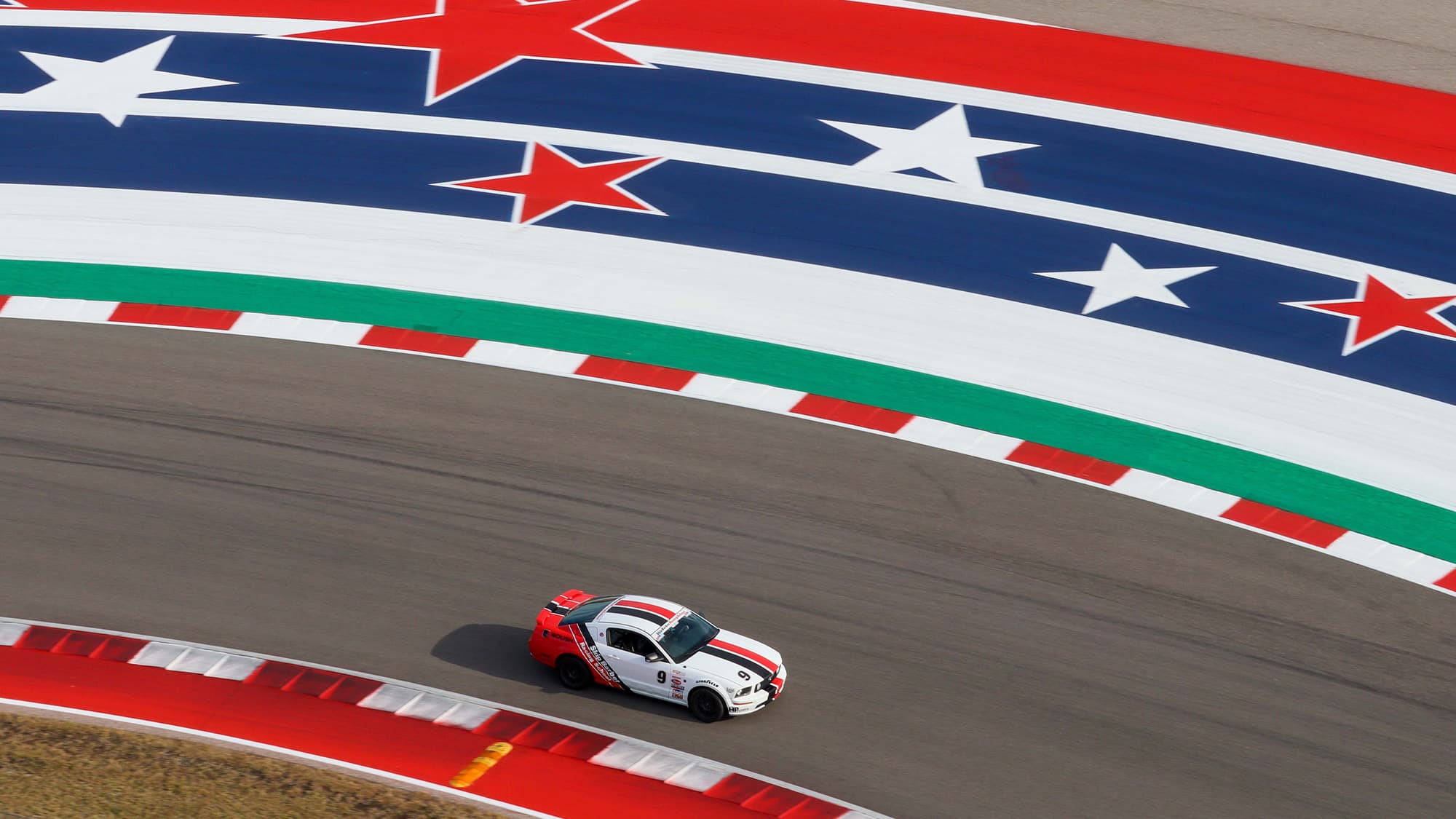Courses are offered in one-day, three-day and advanced two-day racing school formats, each building on the skills and techniques previously acquired. The minimum entry age is 16 years, although younger students with an approved karting background may be considered.
The reference to karting might lead some to believe that experience of it is essential to being a successful student. In fact, the nature of karts – light, low, agile and devoid of suspension – encourages a driving style more suited to the school’s F4 racing cars than its GT vehicles, whose higher centre of gravity and suspension produce very different handling characteristics. “Students with solid karting experience may progress faster in some areas but for GT cars we need to change their driving style,” says Fartuch. “For some, that can actually be quite a struggle.”
Naturally, those with a lot of karting experience are likely to choose Skip Barber’s Formula Car School. Those with only road car experience, will, says Fartuch, find GT School more appropriate and rewarding. “Personally, I feel that transitioning to a GT car is easier for those used to the enclosed cabin, high centre of gravity and long suspension travel of a road car. Once they’re familiar with it, a GT is a great way for the novice racer to understand vehicle dynamics, the effects of weight transfer and how to establish a good racing line.”
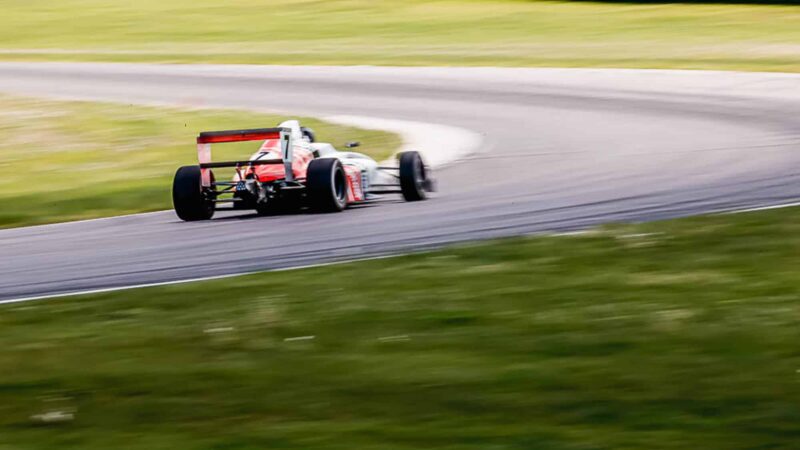
Karters will feel at ease with Skip Barber’s F4 cars
Whichever Skip Barber racing school a student chooses, these and other basic principles of race craft are common to both and presented in increasing detail and complexity, starting with the one-day racing school.
Skip Barber Black Friday sale: Now on
One-day racing school
The day begins with sessions on vehicle dynamics and the racing line before students move out to the skid pan to explore basic car control techniques. These sessions are followed by Fundamentals of a Corner, a fascinating ‘deep dive’ into this endlessly challenging aspect of racing. “We teach students how to deal with a corner and to predict what they need to do as they approach it,” says Fartuch. The morning ends with a recce of the track, the instructor talking the students through the turning point, apex and exit of every corner, a session that instils in them the value of preparation.
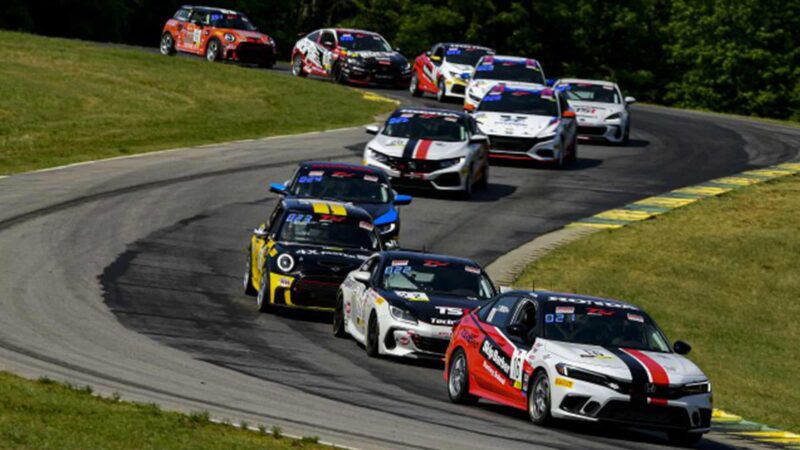
Lead-follow system gives a practical demonstration of racing lines
After lunch and further classroom sessions on adopting the correct racing line and formulating racing strategies, the students, now separated into groups, head out to the cars for racing line practice during which one group of students, driving the race cars, follows another in pace cars driven by the instructors, a system called lead-follow.
By the end of the day all students have been introduced to the basic principles of racing. For some, the experience will feed a desire to know and achieve more. For these people, Skip Barber’s three-day racing school is the logical next step.
